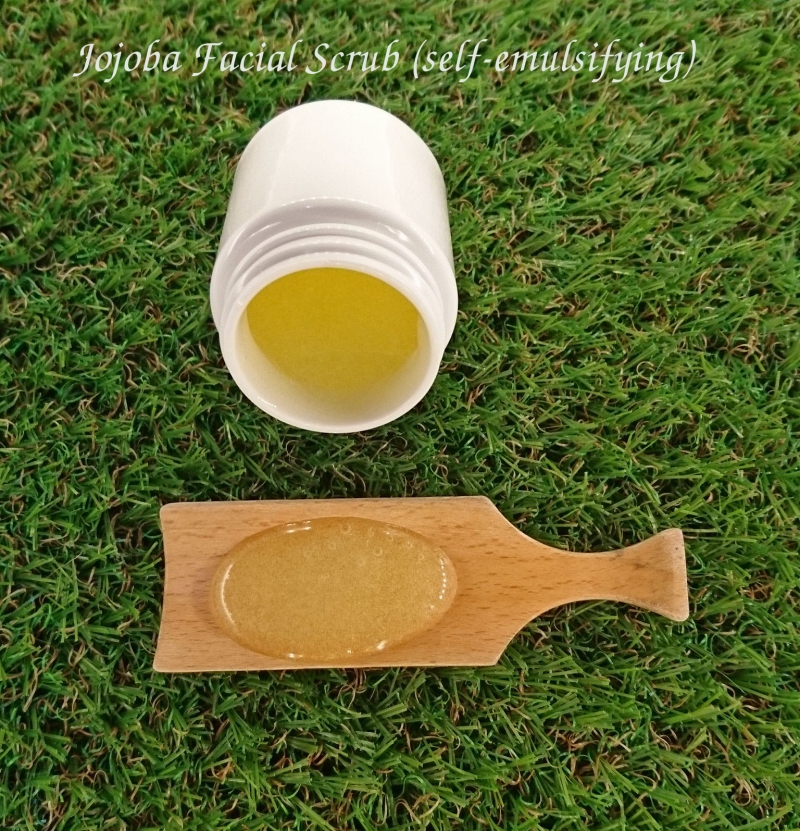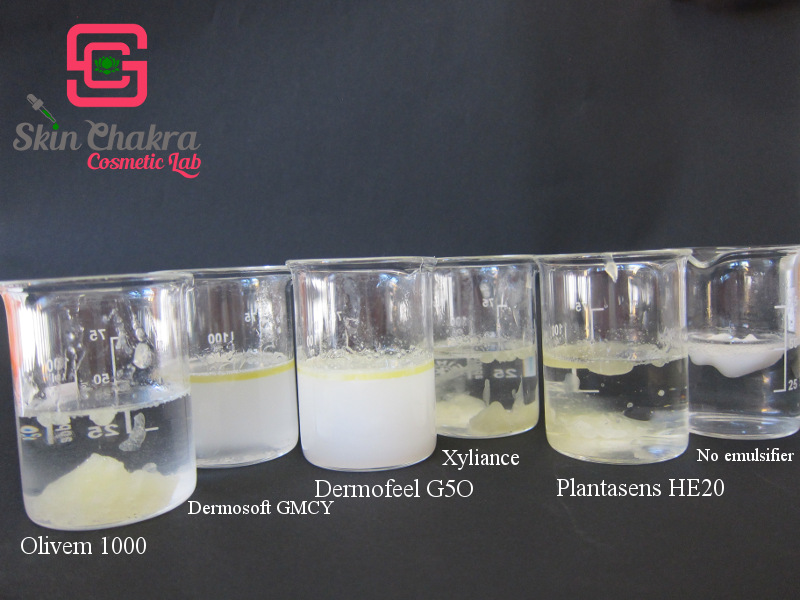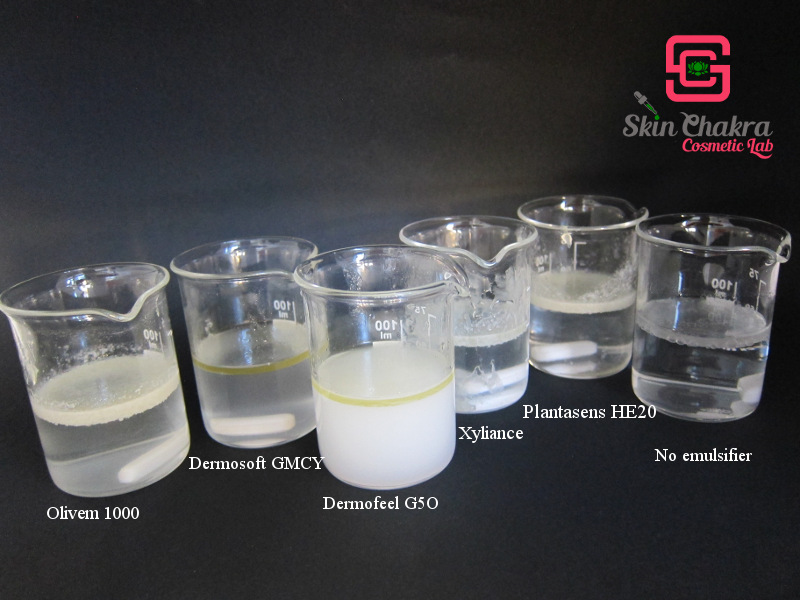As you know, self-emulsifying oils, balms and oleogels are more popular than ever. These are products that are no emulsion themselves, they look like quite an ordinary balm, an oil or an oleogel (a gel-like oil) but as soon as you add water to them, the oil emulsifies to a milk. This helps the product remove additional oil and dirt from the skin and as the whole product emulsifies into a milk it is easily rinsed-off with water without leaving any unpleasant greasiness over skin (something that happens when you apply plain oil or butter to your skin and then rinse it with water).
During the last two years, we've dedicated many tutorials to this concept. If you're new here , you can go and read our previous posts:

Some of our readers have recently asked whether they can use a conventional O/W emulsifier such as Olivem 1000 in a cleansing balm to create self-emulsifying balms and scrubs. The answer is NO.
A conventional O/W emulsifier, specially one which is solid at room temperature has no self-emulsifying properties in a cleansing balm. Its only function in such a balm would be changing the texture , the hardness and the melting point of the balm.
To show you the difference between a conventional emulsifier and a self-emulsifying ingredient, we've tested a sample formulation suggested by one of our readers and tested different emulsifiers and self-emulsifying ingredients in this simple KISS formulation.
The formulation is:
Coconut oil 20.0%
Cocoa butter 10.0%
Sweet almond oil 19.0%
Camelina oil 10.5%
Emulsifier 5.0%
Tocopherol 0.5%
Salt 35.0%
The procedure is quite simple:
Heat all solid ingredients in a water bath. After everything is melted, remove from bath and add liquid ingredients. Start cooling down and stirring till coming to a trace. Add the salt. Pour into a suitable jar and keep for 24 hours in the fridge.
We've tested:
1- Olivem 1000
2- Dermosoft GMCY
3- Dermofeel G5O
4- Xyliance
5- Plantasens HE20
6- No emulsifier at all
The balms have quite different textures because of the difference in melting point of the emulsifiers. The 6th sample with no emulsifier at all, is like a paste at toom temperature and is quite soft.
To test their self-emulsifying, we added 5% of these finished balms to 45 oC water. (This is a much higher temperature than your usual shower water)

This photo demonstrates the balms added to water immediately after addition. We have not blended the balm and water. As you can clearly distinguish, only in case of Dermosoft GMCY and Dermofeel G5O water and oil blend automatically to a milk. In all other cases the balm and water remain clearly separated.
We blended each sample for 10 minutes with a magnetic stirrer. The following photo shows the result.

Here as well, the only real milk is created with Dermofeel G5O. The sample with Dermosoft GMCY is just slightly milky and for the rest there is a clear separation between water and oil.
It means that all conventional emulsifiers are absolutely useless for this purpose. They can however change the texture and melting point of the balm.
I hope this experiment can answer some of your questions and clarify the difference between an emulsifier and a self-emulsifying agent.
Don't hesitate to send us your questions if anything is still unclear.
BeHappy and have fun





